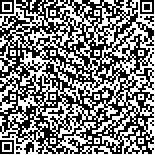| 任 静,李小东,乔丽颖,等.内蒙古地区肝癌高危人群筛查模型效果评价[J].中国肿瘤,2022,31(8):639-648. |
| 内蒙古地区肝癌高危人群筛查模型效果评价 |
| Effectiveness Evaluation of Screening Model for High-risk Population of Liver Cancer in Inner Mongolia |
| 投稿时间:2022-05-16 |
| DOI:10.11735/j.issn.1004-0242.2022.08.A004 |
|
 |
| 中文关键词: 肝癌 筛查 ROC曲线 内蒙古 |
| 英文关键词:liver cancer screening ROC curve Inner Mongolia |
| 基金项目:国家自然科学基金(81974492);中央引导地方科技发展资金项目(2020ZY0015);内蒙古自治区自然科学基金(2021MS08039) |
|
| 摘要点击次数: 1066 |
| 全文下载次数: 423 |
| 中文摘要: |
| 摘 要:[目的] 评价内蒙古地区肝癌高危人群的筛查效果,为建立适宜内蒙古地区肝癌高危人群的筛查模型提供参考。[方法] 共4 899名参与者纳入2016—2018年内蒙古自治区城市癌症早诊早治项目的癌症筛查队列并参与基线调查和随访。整理癌症筛查队列人群的问卷评估、临床筛查和结局随访数据,采用描述性研究分析研究人群的基线信息,对肝癌发生相关的指标绘制ROC曲线,运用ROC曲线下面积(AUC)、灵敏度、特异度等参数评价各指标的预测价值。[结果] 体质指数,接触石棉、橡胶、农药,长期居住或工作的室内环境中经常有人吸烟,乙型肝炎病毒表面抗原,近十年生活环境存在严重空气污染,婚姻状况对肝癌的发生风险均无预测性能(AUC<0.5),其中近十年生活环境存在严重空气污染的差异有统计学意义(P<0.05)。其余指标对肝癌的预测性能均较低(0.5<AUC≤0.7),且差异均无统计学意义(P>0.05)。其中饮茶的AUC最大,为0.646(95%CI:0.498~0.794),灵敏度和特异度分别为61.20%、66.70%,约登指数为27.90%,阳性似然比和阴性似然比分别为1.838和0.582。[结论] 传统宏观危险因素对肝癌筛查、诊断的预测性能较低,应结合生物学检测指标,构建更适用于内蒙古地区肝癌高危人群的风险预测模型,提高肝癌的检出率,降低肝癌的发病和死亡。 |
| 英文摘要: |
| Abstract: [Purpose] To evaluate the screening effect of high-risk population of liver cancer in Inner Mongolia, and to provide reference for establishing a screening model for high-risk population of liver cancer in Inner Mongolia.[Methods] A total of 4 899 participants in this study were included in the cancer screening cohort of the urban cancer early diagnosis and treatment project in Inner Mongolia from 2016 to 2018 and attended baseline survey and follow-up. The questionnaire evaluation data, clinical screening data and outcome follow-up data of the cancer screening cohort population were sorted, and descriptive study was used to analyze the baseline information of the study population, the ROC curve was drawn for the indexes related to the occurrence of liver cancer, the areas under the ROC curve(AUC), sensitivity, specificity and other parameters were used to evaluate the predictive value of each index. [Results] Body mass index, exposure to asbestos, rubber and pesticides, indoor environments where people live or work for a long time were often smoked, HBsAg, serious air pollution in the living environment in the past 10 years, and marital status had no predictive value on the risk of liver cancer(AUC<0.5). “There has been serious air pollution in the living environment in the past 10 years” was statistically significant(P<0.05). The predictive value of other indicators for liver cancer was low(0.50.05). Among them, the AUC of tea consumption was the largest which was 0.646(95%CI: 0.498~0.794), the sensitivity and specificity were 61.20% and 66.70%, respectively. The Youden index was 27.90%. The positive likelihood ratio and negative likelihood ratio were 1.838 and 0.582, respectively. [Conclusion] In this study, traditional macroscopic risk factors have low predictive value for the screening and diagnosis of liver cancer. Established a risk prediction model which is more suitable for high-risk population of liver cancer in Inner Mongolia combined with biological detection indicators to improve the detection rate of liver cancer and decrease the incidence and mortality rates of liver cancer. |
|
在线阅读
查看全文 查看/发表评论 下载PDF阅读器 |